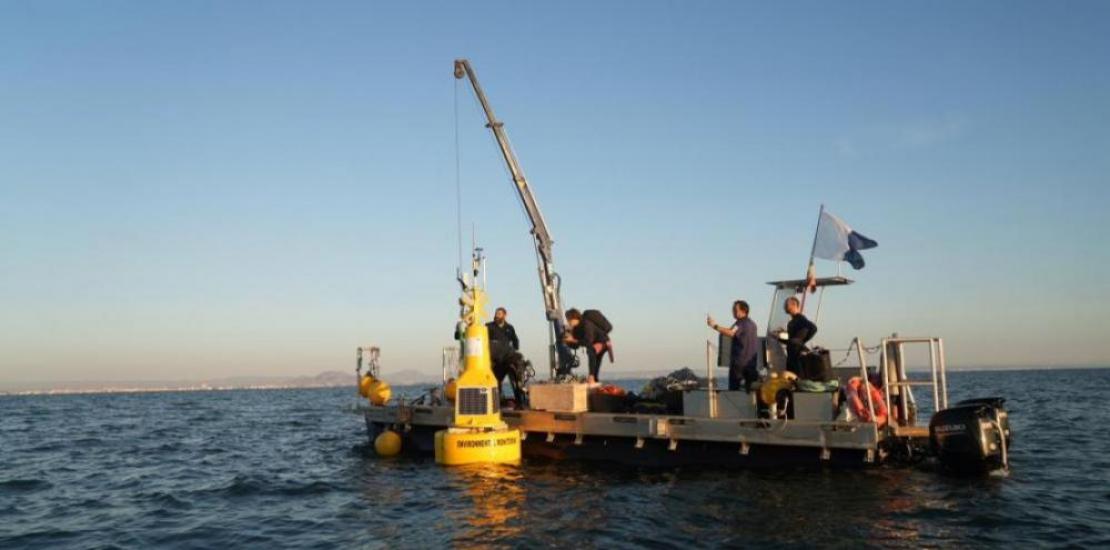European researchers, led by UCAM, install the first smart buoy in the Mar Menor
This measuring device will efficiently send real-time data on the lagoon’s temperature, salinity, chlorophyll and turbidity
The European Smartlagoon project, led by the Universidad Católica de Murcia, takes a further
step towards the creation of the Mar Menor’s digital twin thanks to the installation of the
lagoon's first smart buoy. This measuring device, located in the deepest area of the Mar
Menor, will be the analytical reference for temperature, salinity, chlorophyll and turbidity at
different depth levels. This buoy, weighing more than three hundred kilos and standing more
than three metres high, adds to other devices installed to collect real-time data, such as a
weather station, several cameras located at the lagoon's water inlets and programmes which
allow the flow rate to be calculated thanks to video images.
Buoy measurement parameters
Atmospheric temperature (surface)
Atmospheric humidity (surface)
Wind speed (surface)
Water temperature at different depths.
Dissolved oxygen at various depths.
Chlorophyll, fluorescence and turbidity at 3m depth
Conductivity (Salinity) at various depths.
Smartlagoon, a project funded with almost 4 million euros by the European Commission under
the Horizon 2020 call for proposals, aims to create a digital twin, using artificial intelligence,
which will predict the physical, chemical and biological changes which occur in the salt lagoon
in response to the different events affecting the Mar Menor, both meteorological and those in
which human action is involved, forecasting their changes in the short, medium and long term.
This digital twin shall be made available to public administrations as a proven and effective
tool to aid decision-making.
Javier Senent, principal investigator of the project, stresses that ‘the buoy includes state-of-
the-art sensors developed by researchers from several European countries, specifically for this
study of the Mar Menor.’
With this software, different scenarios can be simulated to solve questions, such as how much
we should reduce the use of fertilisers on crops in the area, how effective it would be to create
green spaces and where to put them, how future damage might affect the salt lagoon, and
how we can prepare for said damage, etc.
Estrella Núñez, vice-rector for Research at UCAM, stresses that ‘the development of quality
science, in collaboration with other international organisations, focused on the resolution of
serious social problems, such as the situation of the Mar Menor, favours the transfer of
knowledge to society as a whole, including the administration.’
European Project Partners
The Smartlagoon project, led by UCAM researcher Javier Senent, involves eight partner
organisations: Universidad Católica de Murcia, Universidad Politécnica de Valencia and Vielca
Ingenieros S.A. (Spain), WaterITech ApS (Denmark), Uppsala University (Sweden), Norwegian
Institute for Water Research (Norway), Università di Bologna (Italy) and Photrack AG
(Switzerland).




